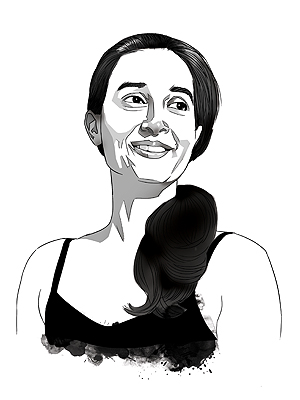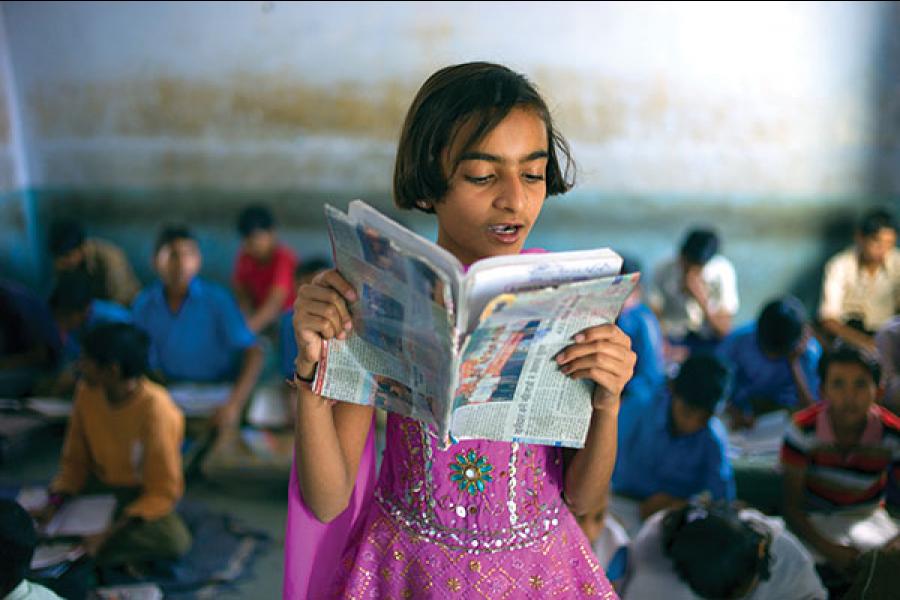
Teach the children well: Achieving excellent education for all
Education for all is a huge task, but it is achievable
Literacy for all is not the truly Utopian goal; what would be worth aiming for is an excellent education for all. I make the distinction based on my own journey in understanding. I believe that an excellent education—more so today than ever before—is also about character-building, values, who you want to be as a person and how you want to contribute beyond yourself to the world around you. It is important to learn mathematics, and language, and science, but it is equally important to learn tolerance, gender equality, and respect for diversity, how to resolve disputes at home; things which seem to have become incidental to education. Until we shift what we think about, what the purpose of education actually is, we’re all doing a lot of work but possibly not in the right direction.
Where are we now and how do we get to this? The truth is, I have no idea. It seems to me, as it would to a layperson, that we are very far away. From whom do we recruit as teachers, to how do we train them, to are our schools set up to be safe and caring environments, to what our curricula look like, there are many miles to go.
Will we get there? I have no doubt that we have the resources—the time, the money, the expertise, the ideas—to get there? I have no doubt that we do. If we can’t solve these problems today, aided by technology, in a world which has become much more ‘many to many’, I don’t know when we will have the opportunity. The differential is, do we want badly enough to solve them?
The real answer is how much we—not just those of us in the field of education, but every one of us across the country—are willing to commit to it. It’s not even about children; are we all committed to the idea of unleashing India’s human potential? If we are, then we have to make an investment in education.
I see the next five years being incredibly exciting, in thinking about and putting that idea into action. How do you provide opportunities, examples, platforms, for every single person, no matter who they are, what work they do, to say: This is my unique contribution to the goal we share as a nation.
Your huge contribution to this goal—you, this magazine, you, the reader—is your giving me this platform, you reading this. If you work in business, you could think about the massive opportunity we have ahead. If you’re a parent, think differently about what you’re going to provide your children and how you’re going to help them understand their education. Every person has their role to play.
I have shifted pretty dramatically from feeling, when I was much younger, that there had to be silver bullet solutions, big ideas that were going to take us to this goal, to believing now that it’s the power of that collective will fuelled by all of us doing little things that is the answer.
It’s a complex problem to break down, and I don’t know if there is a natural, obvious sequence of steps towards a solution. In fact I would caution against saying, this is the first step, this is the next.
There’s a huge lack of understanding, of data about where we are. We need to understand the complexity, and then work on the multiple aspects of the problem, keeping in mind that the goal has to be bigger than literacy.
We have to change the way we think about the teaching profession: Who comes into it? Why are our best people not motivated to go into teaching? How do we really support and value our teachers? How do we change how our teachers think about teaching, about themselves and the importance of their work?
Another big area of focus is leadership within schools. Across all sectors, we see that where there is a leader with a clear vision of what has to be done, progress happens. Today, in our government school system, the teacher who’s been there the longest heads the school. But there’s no real understanding of whether this person is equipped to do that job, and no support once they get into it. We need to support them, train them, because the results will trickle down to our teachers, and then to our kids.
The third important thing is that under the RTE (Right to Education Act, 2009) is the SMC (School Management Committee) ideas. The people most invested in making education better are the parents of the children. This structure allows them to actually engage in good governance in the school, hold the school accountable, become partners in education. Engaging the community in education is another big step.
These are not sequential steps. There needs to be parallel efforts in these high priority areas for us to progress.
One starting point is showing the examples of what has worked. We get so caught up in trying to find those solutions that can scale up and take care of millions of kids—because, after all, millions of kids need that care—that we forget the need to show what has worked, so more people that want to do it can know that it’s possible.
Take integration in schools. We still don’t have a hundred examples to show how things get better when kids from different income backgrounds go to the same schools. What better way could there possibly be to learn empathy than growing up friends with someone very different from you? We have examples of people in the corporate sector who have devoted resources, thinking, to education, while staying in their jobs, and have had a huge impact. They have shown it is possible.
When you look at the size of the problem, it’s easy to get discouraged. But when you break it down, when you look at the different approaches that have worked, when you have examples and role models, you know it can be done. And, together, we will do it.
(As told to Peter Griffin)
(This story appears in the 09 January, 2015 issue of Forbes India. To visit our Archives, click here.)
-
 Shravan Bhat
Shravan BhatLoved the piece! Of the values you mentioned (tolerance, gender equality, etc...), how much teaching should come from school and how much from parents? I would have thought that well-raised children would already have tolerance, non-violence, etc... ingrained in them by their parents/family from their upbringing? Is this something that schools need to \'teach\'?
on Jan 7, 2015-
 Uma Shankar
Uma ShankarDear Shravan, I think most of us make an assumption that well-raised children have all the values ingrained by their parents/family. But they are also exposed to a society that tells them otherwise. Think about the amount of time they spend with their family these days. Very less. So, it\'s very important that they are taught and given those learning experiences which will build/reinforce values in them. Also, when we say all children, it is not just \'well-raised\' children. It is everyone. More than 90% of India\'s children are not well-raised, if what you mean by well-raised is being tolerant, non-violent etc. What about those children? Who will teach them and their parents? It\'s the role of the teacher to engage parents and families in their child\'s growth. Don\'t you think so? :-)
on Jan 11, 2015
-
-
 Rahul
RahulThis article is very good Teach the children Achieving excellent education education
on Mar 13, 2020
















